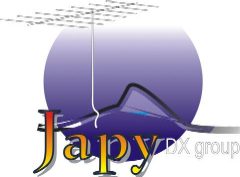OPERATION BAHIA - JANUARY 2009
 |
 |
|
 |
 |
|
By Enos PY2ENO and Flávio PY2ZX
Updated:
09-Jan-2009
When Dave N7BHC first told us that 2009 Namib Expedition would also study and research the Transoceanic through Troposphere Propagation, Japy DX Group got immediately motivated to join to this effort. Firstly gathering and encouraging the South American stations to be QRV for some trials, since it’s not common to have that often a DXpedition in the African coast facing this purpose, specially in a perfect location like Lüderitz (due to the strongest ducts usually appears from South Africa to Northeast Brazil). Also, useless would be the African Team being there on the other side of Atlantic doing the great job of CQ’ing us, if there’s no well prepared stations here, specially in the northeast Brazilian coast.
Last, but not least, regardless the final results, whether successful or not, with or without a QSO, the mere fact of having a VHF DX Man exploring other horizons, new challenges, it is also a compelling event for experimentation and monitoring activity more often in the radio dial range that bring us beyond the competitions. Each moment that the DX Man stay in front of a VHF transceiver concentrated in a difficult technical task, it ensures moments of learning and discoveries that may also lead us to other paths even envisioned by the community.
 |
As
the Japy DX Group has a strong vocation to Outdoor DX operations
and expeditions, a portable operation in Northeast of Brazil had
been considered, in fact long been desired. But because "budgetary
issues" and the immediate need of planning a operation with
the date already determined by the activation Africa, Enos Emerick
PY2ENO could voluntarily to answer the call, representing Japy
DX Group as a partner station to Namibia DXpedition.
The station has the collective support of the whole Japy DX group in the operational guidelines about WSJT digital modes, selection of interfaces, directional antenna DK7ZB adjustments, dissemination and planning of the operation integrated to the Africa DXPedition. |
| Brasil
- Namib radio link on Google Earth: |
With the decision of having the operation already taken, We had to decide the location. In a deeper review of Brazilian Coast HTI values of several months, we noticed that the forecasts of Transoceanic Ducts in the Brazilian coast occur in the following order of incidence:
|
About the scheduled date for the Namibia operation, clearly the first option offers better conditions, although the other points are not discarded, especially 2 and 3. The Troposphere Ducts vary depending on the day and time of day, so the positive conditions appearing today in Salvador/BA may be present in Natal/RN days later.
Initially we have set Aracajú/SE as the place of operation, but to get a more proper installation of the station seafront, with best comfort for installing antennas, far from urban noise, in a more private environment, we chose to operate from Sitio do Conde/BA, starting at January 12th to January, 17th, 2009, north coast of Bahia, locator HH18fd. The callsign will be ZY6Y (Zulu Yankee Six Yankee).
 |
Area of PY6/PY2ENO
operation |
The operating conditions in Bahia are:
- Transceivers: Yaesu FT-897D and Icom IC-706MKIIG (spare);
- Amplifier: Homebrew by PY3FF - 500W in 144 MHz; Mirage B1010 100W in 432 MHz;
- Antenna 50 MHz: 7 elements KLM 6M 7LD horizontally polarized;
- Antenna 144 MHz: 12 elements K1FO by PY2NI horizontally polarized, DK7ZB by PU2WDV;
- Antenna 432 MHz: 22 elements K1FO by PY2NI horizontally polarized;
- Pre-Amplifier: Top Mount SP2000 SSB Electronics;
- Power Supply: Alinco DM-330 MV; Yaesu 897 Internal Power Supply FP-30;
- Computing: Notebook Dell Latitude 620; WSJT;
- Internet: Wireless 802.11G and spare GSM. Specific email/msn/Skype accounts to be created will be further informed.
It’s also possible meetings with local DXers for mutual learning and experience exchanges about propagation conditions throughout the Northeast Brazilian Coast, and operational practices about weak signals. As the whole trip will be made by car, it’s possible some temporary operations in sparse points of the ride.
We strongly suggest and encourage other stations throughout Brazilian Northeast Coast to be part of this effort to try to listen and to contact Namibia DXPedition. Andre PY0FF and Orlando PY2ANE already participated in previous tests Transoceanic tests with African Operations and there’s still very much to be seen, studied and explored.
 |
If our operations are occasional and temporary, the work of a DXMan located in the Northeast Brazilian Coast may be permanent, levering the possibilities of success by the accumulated experience. Other stations in Ascension Island and St. Helena considerably increase the chances of QSO’s. Activities related to 6 meters, SWL and also listening FM radio or TV in VHF / UHF also bring interesting data to help building an integrated knowledge of the Propagation. So this mission, before being a specific Japy DX Group one, may and have to be done by all concerned Ham operator. If you are around Brazilian coast, especially in the above mentioned points, consider also activate your station to attempt the unprecedented contact through the South Atlantic on 144 MHz. |
Our e-mail for sckeds:
![]()
We will be continually updating the website about Bahia Operation, reporting everything about the Namibia DXPedition, and sending emails through VHF-DX. Good luck!


